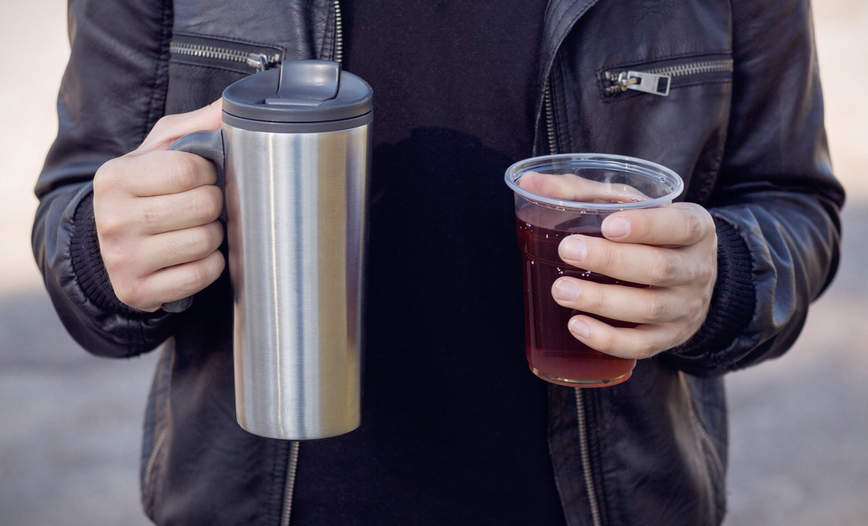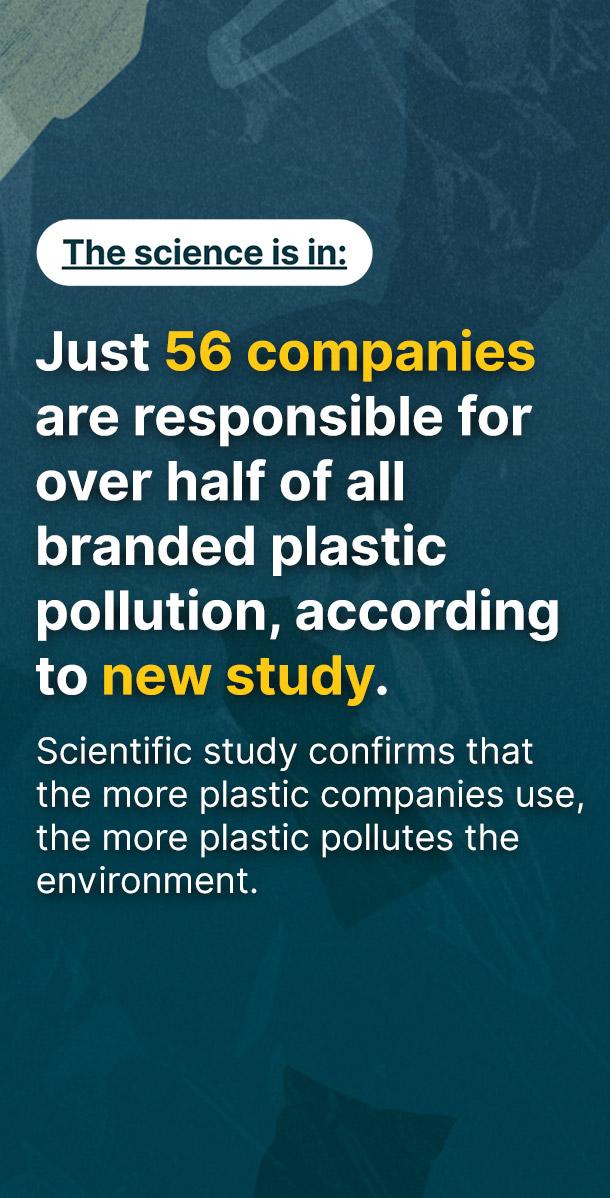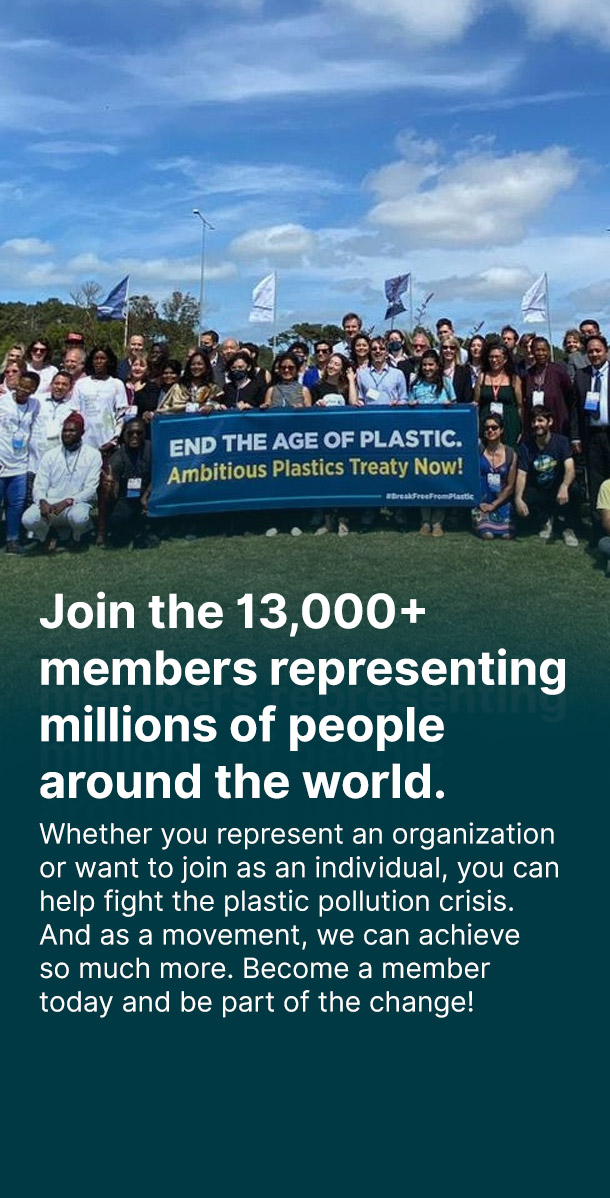Right now, we are all part of an interesting moment of change in our culture. In the span of a very short period of time, plastic straws have gone from a relatively accepted part of everyday existence to a niche-need product. As someone who works to end plastic pollution for a living, I’ve been getting a lot of questions as to how this happened and what it means.
I want to begin by crediting my friends at the Plastic Pollution Coalition and Lonely Whale Foundation. Both groups realized that straws could be the “gateway drug” to get people hooked on taking greater action to solve plastic pollution. And the genius of what became the Strawless Ocean campaign is that the call to action was so simple: Next time you’re out at a restaurant or a bar, tell the server, "No straw, please."
What this simple act of resistance does is that it starts a conversation — between you and the restaurant or bar, and also between you and everyone you’re with. Suddenly, the people you’re out with are confronted with a question — "Should I say 'no straw,' too?" Or they might say, "Oh, that’s interesting. Why no straw?" A conversation about plastic in our environment is teed up for everyone at the table.
But if this action stops at straws, we won’t have accomplished very much. One of the core questions we and our friends in the plastic-pollution movement are asking is, "How do we turn this awareness and desire for action into truly transformative change that reshapes how we think about and use throwaway products and creates something better in its place?"
If this action stops at straws, we won’t have accomplished very much.
A couple of years ago, my friend Marcus Eriksen from the 5 Gyres Institute and I were having a conversation centered around this exact question. That conversation led us and several of our friends to author a report called the Better Alternatives Now List (BAN List), where we analyzed publicly available data from a number of sources to determine which plastic products were most widely found in the environment.
We purposely did not look at microfibers from synthetic clothing, microbeads from cosmetic products, fishing gear or plastic dust abrading from tires. These are all significant sources of plastic pollution, but from our perspective, they are products that require technical design changes from industry, and not necessarily changes in the way we consume.
When we looked at the data, what we found was that most products, not surprisingly, were convenience to-go food and beverage packaging. Here are the top 10:
- Food wrappers (candy, chips, etc.)
- Bottle caps
- Beverage bottles
- Plastic bags
- Straws and stirrers
- Lids
- Utensils
- Cigarette butts
- Take-out containers
- Cups and plates
When you look at the data worldwide, you see pretty much the same types of products in the environment. The exception is that in Latin America, Africa, India and Southeast Asia, you also see a lot of single-serve personal care products and sundry items — shampoo, laundry detergent, dish detergent, etc — packaged in little plastic pouches commonly called sachets.
Now, you can solve plastic pollution in the environment by switching out throwaway plastic for another throwaway product made from a different material, such as paper, for example. However, with this approach we’re often pursuing strategies that are "out of the frying pan, into the fire."
For example, styrofoam container bans, which we support, often lead to restaurants substituting paper-based to-go containers, many of which are made with toxic Teflon-type chemicals that have been proven to cause harm. And throwaway paper products come with their own set of environmental problems — deforestation, carbon emissions from manufacture and transport, methane emissions from decomposing in landfills, etc.
While substituting more sustainable materials for high-pollution plastic products is likely to be part of the solution for certain products, the real game-changer is figuring out how to get what we want without any disposable materials at all.
Let’s imagine what this world might look like:
Imagine that you walk into a coffee shop and realize you forgot your reusable mug, and right as you turn to your friend to complain about how hard it is to do the right thing, the person behind the counter says, "That’s OK. We’ve got reusable cups on deposit. That will be $1 extra and you can change it out for a clean mug at any coffee shop in town next time you need your caffeine fix."
Or imagine that you’re taking lunch to go from your favorite restaurant to eat in the park. And as you wrestle with the guilt of of taking yet another throwaway to-go box, the person behind the counter hands you your food in a reusable to-go box and mentions there is a kiosk in the park where you can drop it off (or at any restaurant or grocery store in the city).
Or imagine that you’ve ordered take-out from Seamless or GrubHub or a mealkit from Blue Apron, and the delivery driver hands you your food in reusable containers and says that they will pick them up next time you place an order.
Now imagine that every airport, every mall, every theme park, every zoo, every university campus, every office building and corporate campus did the same thing — got rid of throwaway cups, lids, plates, cutlery, straws, bags, etc. So that everywhere you go, you are getting what you want without all the waste, in reusable systems that are created and run by business.
The really great news is that this is happening right now. All over the world, businesses, college campuses and communities are saying no to disposable packaging and designing reusable systems that are convenient, sustainable and way more fun than the old throwaway model. Here’s just a few examples:
In Switzerland, ReCircle is serving hundreds of to-go oriented restaurants with reusable containers.
In Germany, cities such as Freiberg, Hamburg and Berlin have reusable coffee cups on deposit at cafes throughout each city.
Companies such as CupClub, DishJoy and VesselWorks are creating reusable systems for coffee cups, dishware, to-go-containers and more, for businesses, campuses, office buildings and communities that want to ditch throwaway for reusable.
In Portland, Oregon, and Durham, North Carolina, businesses and community members have developed reusable to-go container systems to serve restaurants and patrons.
So, how do we replace the throwaway society with a culture of stewardship? We believe that there are important roles for communities, businesses and individuals.
Communities
From our perspective, the biggest opportunities for communities are to address grocery stores and retail, restaurants and institutional dining, and food delivery:
Here's the low-hanging fruit:
- Plastic bag bans/disposable bag fees (including fees on disposable paper bags).
- Polystyrene (Styrofoam) container ban.
- Straws on request.
- From there, the next levels are:
- Bans on plastic cutlery, straws, stirrers.
- Requiring on-site dining to be reusable — no disposable plates, cups, cutlery for dining-in.
- Fees on to-go disposables — cups, to-go containers, primarily.
- Developing and marketing public water "hydration stations" (and ditching bottled water in community buildings).
- Most important: developing community-wide reusable systems for to-go cups and containers. Once the reusable system is in place, incorporate it into food-delivery.
- Institutions (universities, corporate campuses) and places of commerce (malls, airports, stadiums) are mini-communities and can follow the same kinds of policies to develop their own reusable systems. Because these are closed systems, the facilities managers have a lot of power to create rules for the vendors that operate on their campus or in their buildings.
Business
Companies have the responsibility to identify their high-pollution products and begin taking steps to change. Businesses — especially grocers, retail and foodservice operations — also can take the same steps as communities and institutions (outlined above) either on their own, or in partnership with other businesses.
Companies have the responsibility to identify their high-pollution products and begin taking steps to change.
If your community hasn’t developed a reusable to-go system yet, you can deeply discount reusable containers and encourage your customers to bring them. You also can charge for disposables — and publicize that you’re doing so — in an effort to do the same. More important, you can get ahead of the curve and develop a reusable system for your own customers, test what works and be a model for the rest of the business community.
For multinational corporations, the actions really break down by sector:
Beverage industry — bottles and caps, six-pack holders. Beverage companies voluntarily should use existing technology to attach their bottle-caps to the bottles. They also could ensure that their products don’t end up in the environment by supporting state-level connect-the-cap and bottle-deposit legislation, which works remarkably well to ensure people recycle their plastic bottles. After deposits are in place, the real game-changer is figuring out how to bring refillables back as they do in many parts of the world.
Personal care products and sundries — sachets. This is by no means an easy problem to solve, but for much of human history people got their sundries and personal care products in reusable containers. Reusable delivery systems that protect the integrity of the product, avoid contamination, provide for sales of affordable portions and allow for market competition may be one of the better ways to solve the ubiquitous problem of sachets in the environment.
Consumer packaged goods — most wrapped convenience food packaging, such as food wrappers, chip bags, etc. This is probably the hardest one to tackle. Two tracks:
Design change. Today, to my knowledge, no material besides plastic provides shelf-stable packaging for convenience food for the 12 to 18 months that vendors require of consumer packaged goods companies. There likely needs to be massive investment to design truly safe, biodegradable packaging (in ambient environmental conditions), yet maintain a shelf-stable consumable food product for 12 months.
Culture change. There is no question consumers worldwide need to slowly wean ourselves off junk food and eat healthier. It’s possible we can start to do this by eating less packaged food on the go, emphasizing slowing down to enjoy healthy meals out, and to make healthier food at home.
Big picture, business needs to start figuring out how to start kicking the plastic habit across the board. Because plastic pollution isn’t just about plastic in the ocean. It’s one long toxic supply chain that takes a massive toll on the environment and human health. From fracked natural gas wells contaminating drinking water; to pipelines scarring the landscape; to the sacrifice zones — especially among communities of color — in the Gulf South where petrochemicals are turned into plastic. We need to find better ways to deliver food and products without this kind of harm.
Individuals
Bringing your own coffee cup and reusable water bottle are great first steps, but we believe the most important thing you can do is create demand for the changes in your community and with the businesses you support.
That starts with a conversation. Just like with straws, every individual conversation about throwaway plastic can start more conversations, which can start more conversations which can change the world. If your community, school or workplace hasn’t yet begun to address throwaway plastic, begin a group — or join one — to start having conversations about how to get these policies adopted. Make sure to reach out to the businesses you frequent and start conversations with them. Better yet, do it with your friends and family.
When we act in private, we can feel good about not contributing to the problem, but we don’t change the narrative. When we act visibly in our community and with our community — and foster conversations about doing things better — then we start to change the norms of what’s acceptable and what isn’t in our society.
And that has the power to change the world more rapidly and more transformatively than anything else.
Written by Matt Prindiville. Article originally appeared here.




